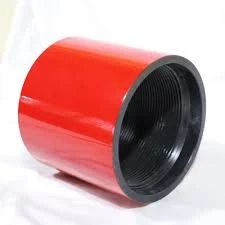- Afrikaans
- Albanian
- Amharic
- Arabic
- Armenian
- Azerbaijani
- Basque
- Belarusian
- Bengali
- Bosnian
- Bulgarian
- Catalan
- Cebuano
- Corsican
- Croatian
- Czech
- Danish
- Dutch
- English
- Esperanto
- Estonian
- Finnish
- French
- Frisian
- Galician
- Georgian
- German
- Greek
- Gujarati
- Haitian Creole
- hausa
- hawaiian
- Hebrew
- Hindi
- Miao
- Hungarian
- Icelandic
- igbo
- Indonesian
- irish
- Italian
- Japanese
- Javanese
- Kannada
- kazakh
- Khmer
- Rwandese
- Korean
- Kurdish
- Kyrgyz
- Lao
- Latin
- Latvian
- Lithuanian
- Luxembourgish
- Macedonian
- Malgashi
- Malay
- Malayalam
- Maltese
- Maori
- Marathi
- Mongolian
- Myanmar
- Nepali
- Norwegian
- Norwegian
- Occitan
- Pashto
- Persian
- Polish
- Portuguese
- Punjabi
- Romanian
- Russian
- Samoan
- Scottish Gaelic
- Serbian
- Sesotho
- Shona
- Sindhi
- Sinhala
- Slovak
- Slovenian
- Somali
- Spanish
- Sundanese
- Swahili
- Swedish
- Tagalog
- Tajik
- Tamil
- Tatar
- Telugu
- Thai
- Turkish
- Turkmen
- Ukrainian
- Urdu
- Uighur
- Uzbek
- Vietnamese
- Welsh
- Bantu
- Yiddish
- Yoruba
- Zulu
Understanding the Key Distinctions Between Casing and Tubing in Oil Wells
Differences Between Casing and Tubing in Oil and Gas Wells
In the oil and gas industry, two crucial components are casing and tubing. Although they may seem similar at a glance, each serves distinct purposes in the drilling process and overall well structure. Understanding the differences between casing and tubing is essential for professionals in the field, as well as for anyone interested in oil and gas production.
Casing A Structural Backbone
Casing refers to the series of steel pipes that are installed in the drilled wellbore to create a stable environment. Its primary purpose is to prevent the well from collapsing and to isolate the various formations encountered during drilling. Casing is typically cemented in place to ensure it remains secure against the walls of the wellbore. This process is crucial for maintaining the integrity of the well, as it helps protect both the wellbore and surrounding environments from potential contamination due to the migration of fluids.
Casing comes in various sizes and grades, which are determined based on the depth of the well and the specific geological conditions encountered. The types of casing commonly used include surface casing, intermediate casing, and production casing. Surface casing is installed at the shallowest depths and typically extends a few hundred feet below the surface; its job is to protect freshwater aquifers. Intermediate casing is used for deeper sections and can help manage pressure issues, while production casing is installed in the production zone to facilitate the extraction of oil or gas.
Tubing The Production Channel
On the other hand, tubing is a smaller diameter pipe that is placed inside the casing. Its main function is to transport hydrocarbons (oil and gas) from the production zone to the surface. Unlike casing, tubing is not cemented in place; it is designed to allow for easy removal and replacement if needed, which is essential for maintenance and workover operations.
Tubing comes in different dimensions and strength grades as well, tailored to the specific requirements of the production process. The selection of tubing is critical because it must withstand varying pressures and temperatures, as well as the corrosive properties of certain production fluids. Additionally, tubing can be equipped with various components, such as perforations or valves, to facilitate efficient flow management and control during production.
what are the differences between casing and tubing?

Key Differences
1. Function and Purpose The most fundamental difference lies in their purpose. Casing acts as structural support and environmental protection, while tubing is focused on transporting hydrocarbons from the well to the surface.
2. Installation and Placement Casing is cemented into place along the wellbore and remains fixed, whereas tubing is run inside the casing and can be removed for maintenance or replacement.
3. Size Casing is typically larger in diameter than tubing. The casing must be robust enough to uphold the wellbore, while tubing is designed for flow, not structural support.
4. Materials and Grades Both casing and tubing are made from steel, but they often have different grades depending on their specific applications and the pressures they will encounter. Casing grades focus on structural integrity, while tubing grades are concerned with flow efficiency and resistive properties.
5. Cost Casing generally represents a larger investment in terms of both materials and installation due to the complexities involved in maintaining well integrity. Tubing costs can vary based on length and diameter but are generally less than casing.
Conclusion
While both casing and tubing are essential components of oil and gas wells, understanding their distinctions is vital for effective drilling and production operations. By knowing their individual functions, installation processes, and material properties, professionals in the industry can optimize well design and enhance extraction efficiency. In summary, casing provides stability and protection, while tubing is the lifeline through which the extracted hydrocarbons flow to the surface. This fundamental understanding is crucial for the success of drilling projects and the sustainability of the oil and gas industry.
-
Tubing Pup Joints: Essential Components for Oil and Gas OperationsNewsJul.10,2025
-
Pup Joints: Essential Components for Reliable Drilling OperationsNewsJul.10,2025
-
Pipe Couplings: Connecting Your World EfficientlyNewsJul.10,2025
-
Mastering Oilfield Operations with Quality Tubing and CasingNewsJul.10,2025
-
High-Quality Casing Couplings for Every NeedNewsJul.10,2025
-
Boost Your Drilling Efficiency with Premium Crossover Tools & Seating NipplesNewsJul.10,2025







